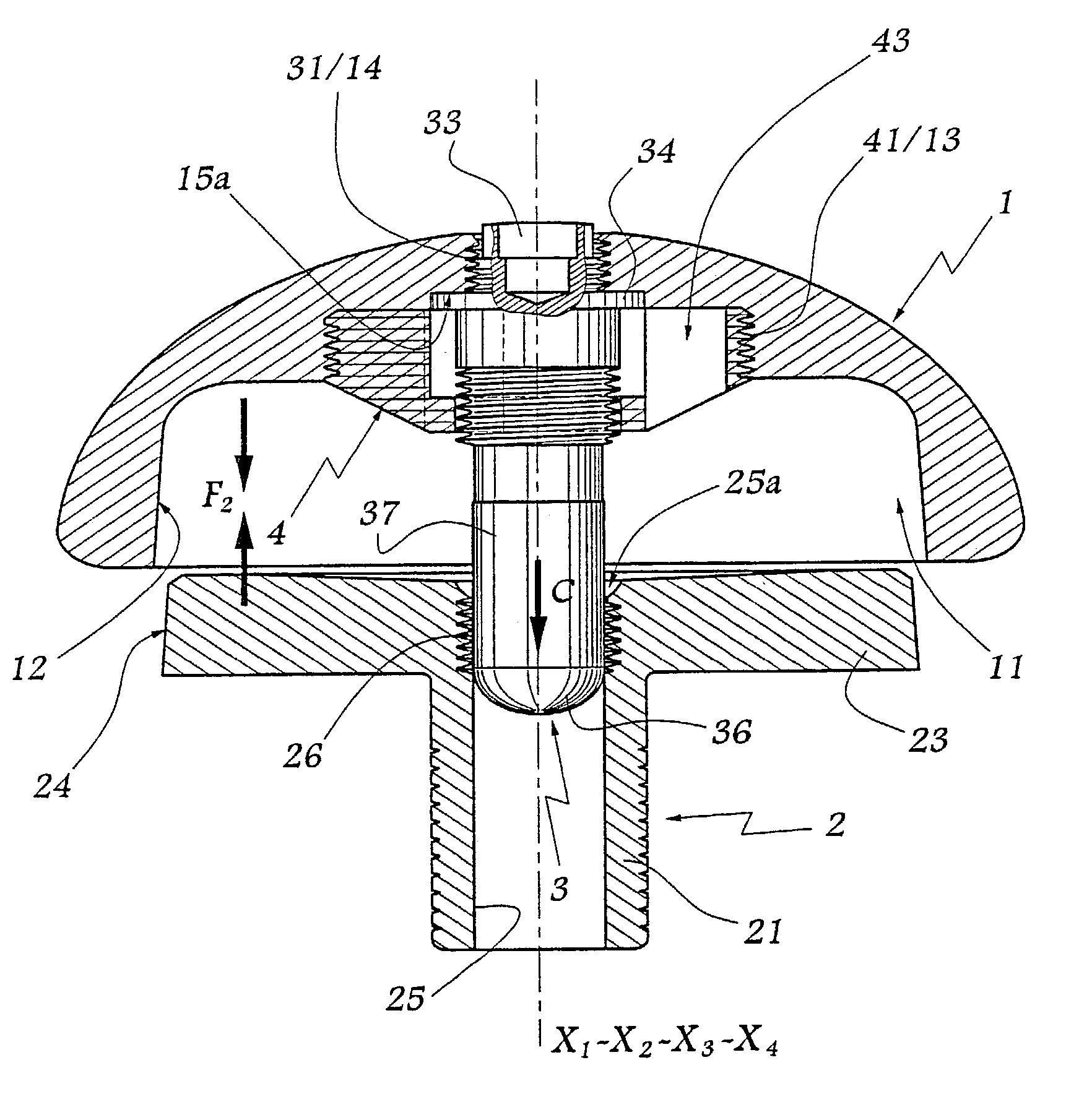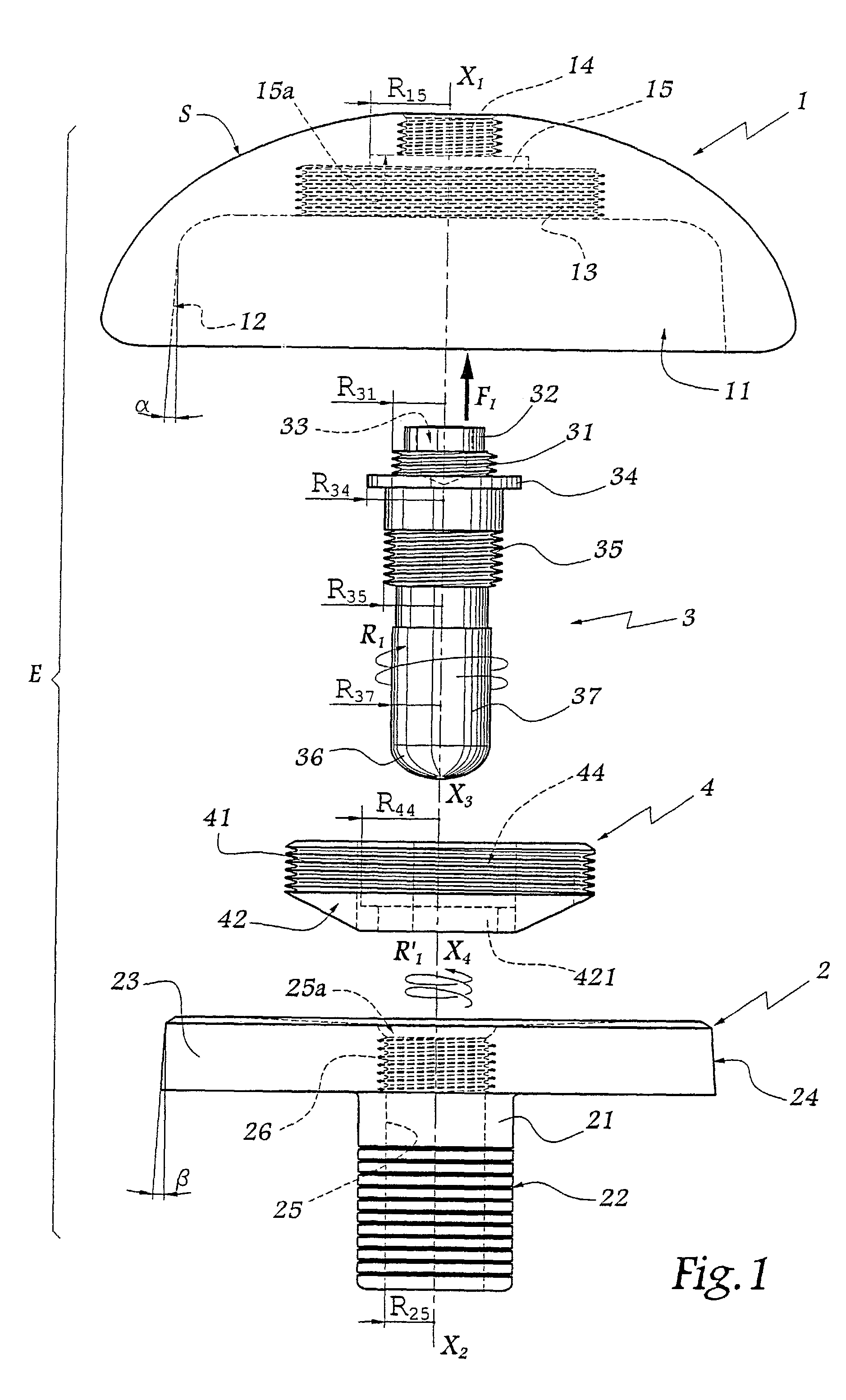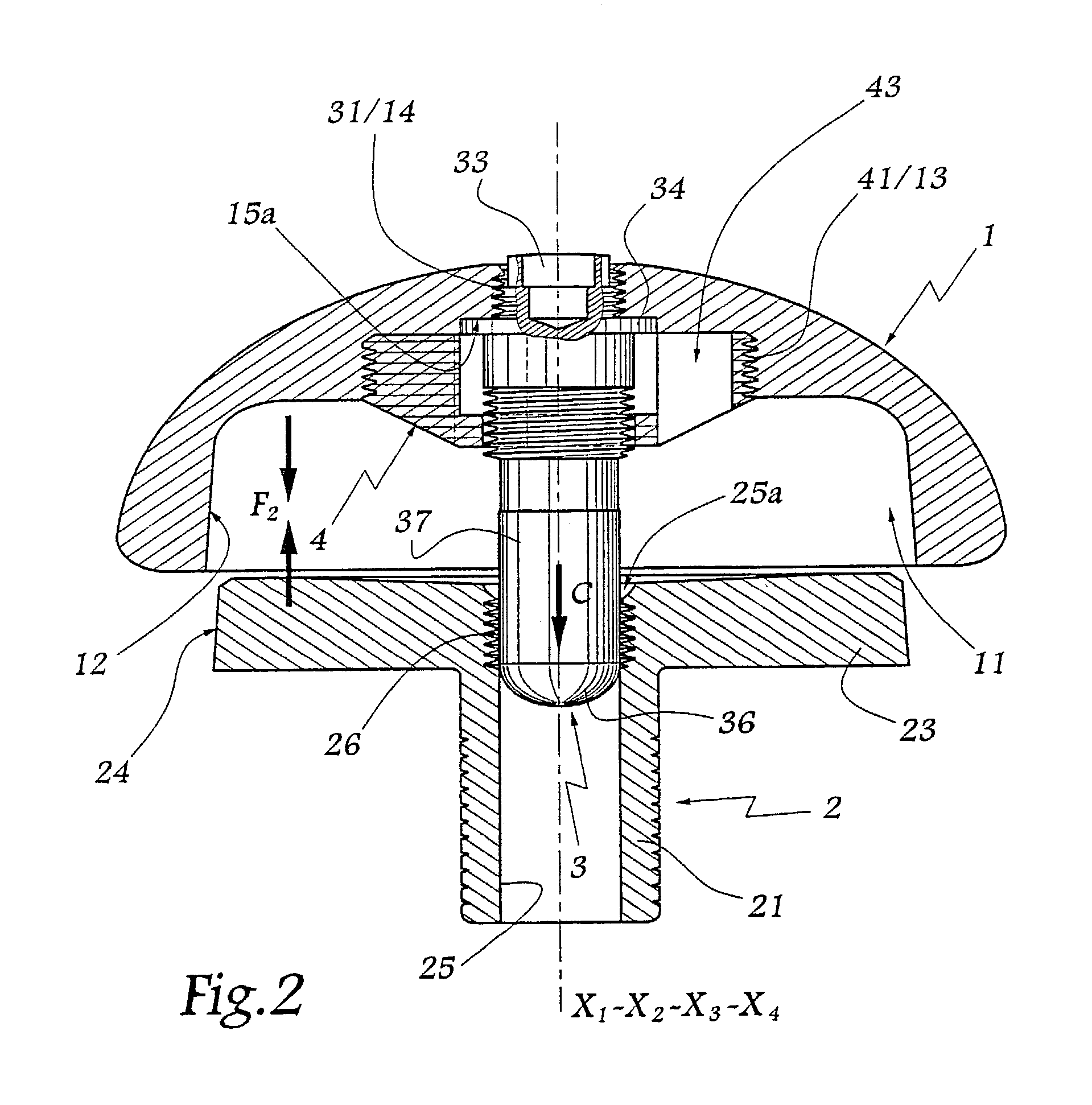Prosthetic element comprising two components and process for assembling such a prosthetic element
a technology of prosthetic elements and components, applied in the field of prosthetic elements, can solve the problems of not always being able to achieve the effect of reducing the risk of thread distortion or tapping, and avoiding the possibility of affecting the quality of the prosthetic elemen
- Summary
- Abstract
- Description
- Claims
- Application Information
AI Technical Summary
Benefits of technology
Problems solved by technology
Method used
Image
Examples
Embodiment Construction
[0039]Referring now to the drawings, the prosthetic element E shown in the Figures is intended to be mounted on a shoulder in order to constitute an articular surface S intended to cooperate with a cupule (not shown) belonging to a complementary prosthetic element anchored in the patient's humerus.
[0040]The surface S is approximately in the form of a portion of sphere and constitutes the outer surface of a first principal component 1 made of a material compatible with the movements of articulation on the cupule associated therewith.
[0041]X1 denotes a central axis of the component 1 which constitutes a diameter of the surface S. The component 1 is provided with a central recess 11 centered on axis X1 and of which 12 denotes the peripheral surface, this surface being of truncated shape.
[0042]A tapping 13 is provided at the bottom of the recess 11, centered on axis X1.
[0043]A second tapping 14 is centered on axis X1 and opens to the outside, at the surface S.
[0044]A circular bore 15 is...
PUM
 Login to View More
Login to View More Abstract
Description
Claims
Application Information
 Login to View More
Login to View More - R&D
- Intellectual Property
- Life Sciences
- Materials
- Tech Scout
- Unparalleled Data Quality
- Higher Quality Content
- 60% Fewer Hallucinations
Browse by: Latest US Patents, China's latest patents, Technical Efficacy Thesaurus, Application Domain, Technology Topic, Popular Technical Reports.
© 2025 PatSnap. All rights reserved.Legal|Privacy policy|Modern Slavery Act Transparency Statement|Sitemap|About US| Contact US: help@patsnap.com



